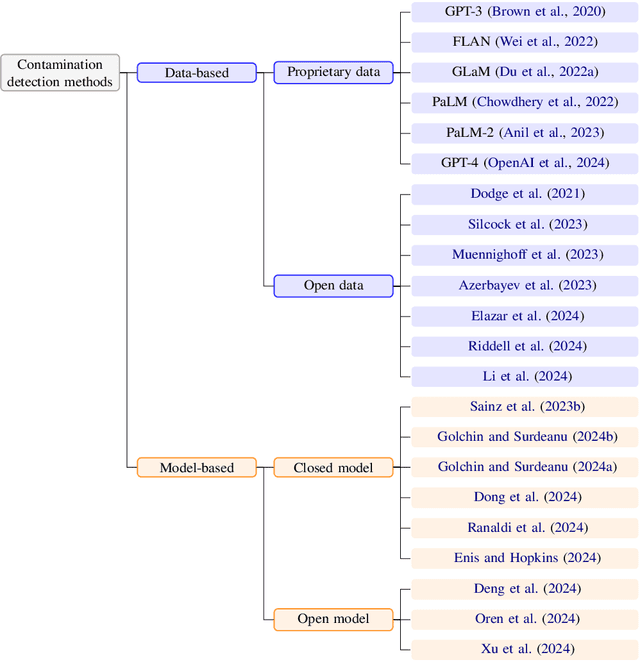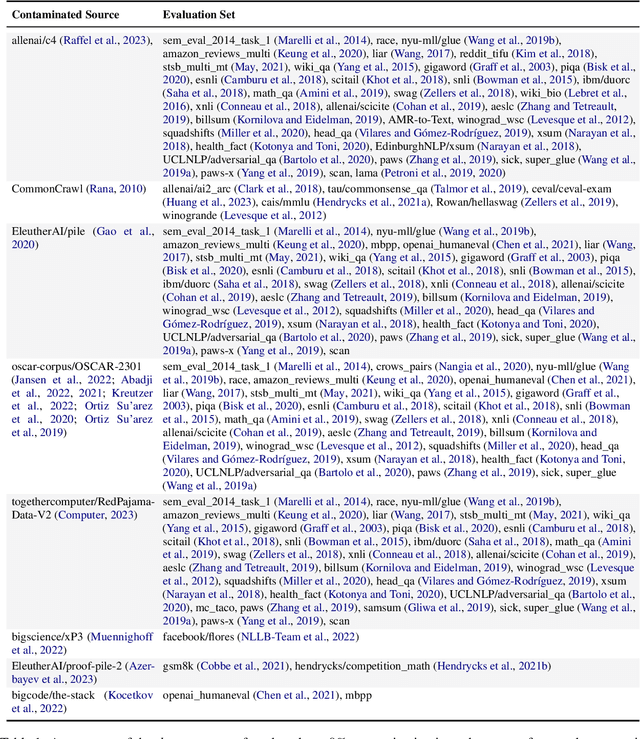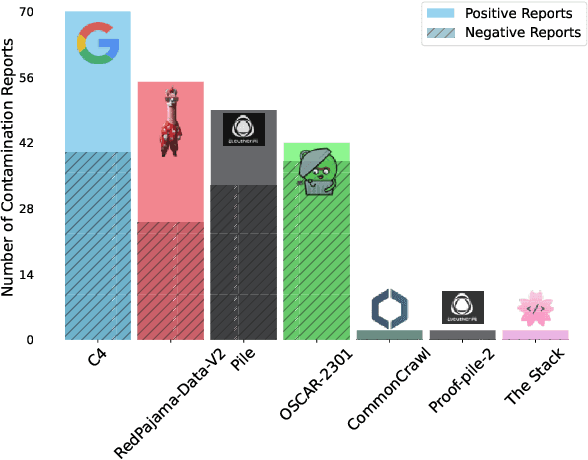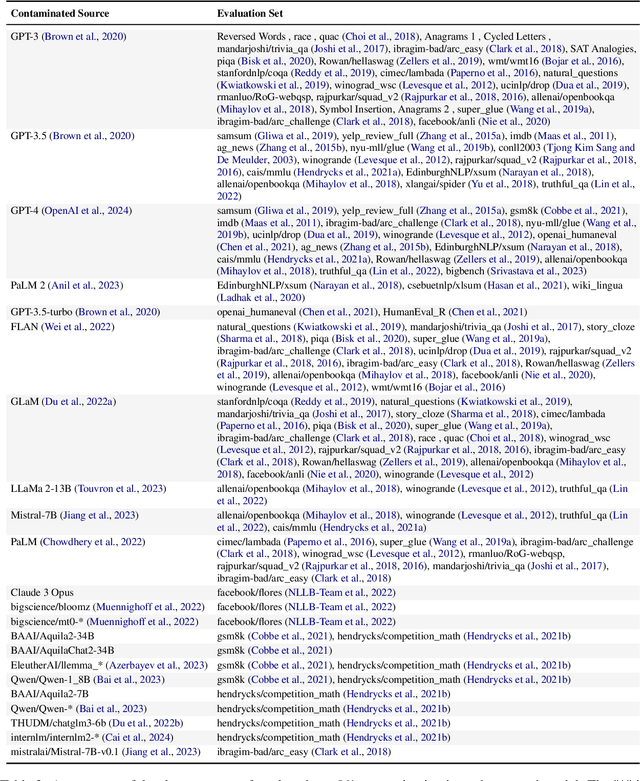Jinglin Yang
Data Contamination Report from the 2024 CONDA Shared Task
Jul 31, 2024



Abstract:The 1st Workshop on Data Contamination (CONDA 2024) focuses on all relevant aspects of data contamination in natural language processing, where data contamination is understood as situations where evaluation data is included in pre-training corpora used to train large scale models, compromising evaluation results. The workshop fostered a shared task to collect evidence on data contamination in current available datasets and models. The goal of the shared task and associated database is to assist the community in understanding the extent of the problem and to assist researchers in avoiding reporting evaluation results on known contaminated resources. The shared task provides a structured, centralized public database for the collection of contamination evidence, open to contributions from the community via GitHub pool requests. This first compilation paper is based on 566 reported entries over 91 contaminated sources from a total of 23 contributors. The details of the individual contamination events are available in the platform. The platform continues to be online, open to contributions from the community.
Noise-Robust De-Duplication at Scale
Oct 09, 2022



Abstract:Identifying near duplicates within large, noisy text corpora has a myriad of applications that range from de-duplicating training datasets, reducing privacy risk, and evaluating test set leakage, to identifying reproduced news articles and literature within large corpora. Across these diverse applications, the overwhelming majority of work relies on N-grams. Limited efforts have been made to evaluate how well N-gram methods perform, in part because it is unclear how one could create an unbiased evaluation dataset for a massive corpus. This study uses the unique timeliness of historical news wires to create a 27,210 document dataset, with 122,876 positive duplicate pairs, for studying noise-robust de-duplication. The time-sensitivity of news makes comprehensive hand labelling feasible - despite the massive overall size of the corpus - as duplicates occur within a narrow date range. The study then develops and evaluates a range of de-duplication methods: hashing and N-gram overlap (which predominate in the literature), a contrastively trained bi-encoder, and a re-rank style approach combining a bi- and cross-encoder. The neural approaches significantly outperform hashing and N-gram overlap. We show that the bi-encoder scales well, de-duplicating a 10 million article corpus on a single GPU card in a matter of hours. The public release of our NEWS-COPY de-duplication dataset will facilitate further research and applications.
 Add to Chrome
Add to Chrome Add to Firefox
Add to Firefox Add to Edge
Add to Edge